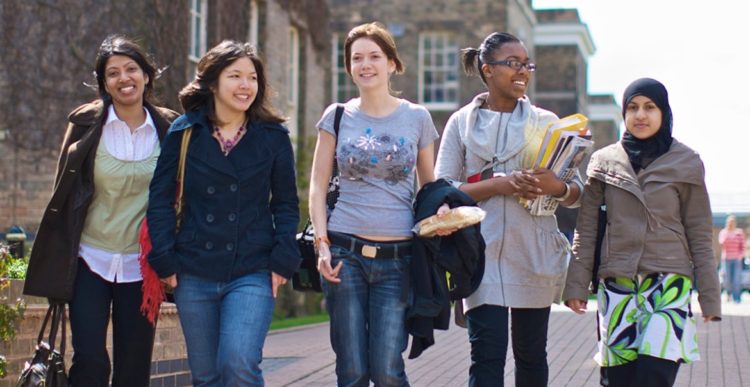By Sheila Mckenzie-
The number of referrals to children’s social services made by schools has risen by more than 50 per cent in the last eight years, government data shows. Some 413,320 “episodes of need” started in the year ending March 2022 – the highest since 2014, Department for Education (DfE) figures show.
Overall, there were 650,270 referrals were made, up 8.8% from 2021 and up 1.1% from 2020.
A total of 129,000 referrals, the largest figure since reporting began in 2014 were England, have been made in the past 2 years.
It represents a 51 per cent rise on the year ending March 2014, when 85,630 referrals were made.
The news comes as referrals of vulnerable children deemed to face risks to their development or health increased across the board following the pandemic.
In the year to March 2022, there were 650,270 referrals to children’s social services from all sources – up 8.8 per cent from 2021 and 1 per cent from 2020.
The Department for Education (DfE) said increases across the last two years had been sparked by a 59 per cent rise in referrals from schools, which was expected as there were no national attendance restrictions during the year.
Police data collected by child protection charity NSPCC shows child cruelty offences in England jumped by a quarter (to more than 26,000) in the year to March 2022, compared with the previous year (just over 21,000).
However, pre-pandemic data also shows annual increases in referrals from schools between 2014 and 2019.
Given the rising role of schools in identifying signs of abuse and neglect in children, former education secretary Sir Gavin Williamson announced a scheme to put social workers in classrooms in 2020.
The £6.5m fund was rolled out to more than 150 schools with the aim of joining up the work of social workers and teaching professionals following a rise in reports of domestic incidents during lockdowns.
At the time, schools were second largest source of referrals to children’s social services, at 18 per cent.
This figure now stands at 20 per cent, but it is not clear what role the scheme has played in the increase.
Police remain the largest source of referrals to children’s social care, with 191,840 made across England this year.
While referrals made by forces remained steady during the pandemic, they grew at a much slower rate than schools during the eight-year period – at 23 per cent.
In contrast to referrals, the proportion of children assessed as needing help and protection as a result of external risks has fallen.
In the year to March 2014, 19.6 per cent of referrals resulted in assessments where the child was deemed not to be in need. In the year ending March 2022, the figure was 28.8 per cent.
Referrals deemed to require no further action have also fallen – from 14.1 in 2014 to 7.6 in 2022.
Thr figures also show that there was a rise in section 47 enquiries, which are carried out when the local authority identifies there is reasonable cause to suspect the child is suffering or is likely to suffer significant harm.
There were 217,800 section 47 enquiries in the latest year – an increase on both 2021 and 2020 and the highest figure on record.
If concerns are substantiated, and the child is judged to be at continuing risk of harm, an initial child protection conference should be convened.
A child becomes the subject of a child protection plan if they are then assessed as being at risk of harm, with 50,920 children on such plans in 2022.
Clare Kelly, associate head of policy at the NSPCC, said: “It’s concerning to see a rise in children needing support, in particular for abuse and neglect, when we know the system is struggling to cope and the cost-of-living crisis will likely leave more families needing help.
“Today’s figures must serve as a wake-up call for the Government to make child protection a national priority and publish their action plan in response to the review into the tragic deaths of Arthur Labinjo-Hughes and Star Hobson as soon as possible.
“The new Prime Minister Rishi Sunak could also signal his intention to act by appointing a Cabinet minister for children today, as recommended by the Independent Inquiry into Child Sexual Abuse last week.”
The Children’s Society have warned that the data on child criminal exploitation will be the “tip of the iceberg”.
Sarah Wayman, the charity’s head of policy and impact, said: “More needs to be done to protect children, including earlier identification of risks such as exploitation to commit crime, sexual abuse, mental ill-health and domestic abuse.
“But this requires significant investment. Spending by councils on early support for families halved over the last decade following government cuts and they need urgent funding to turn this around. It’s vital that they receive, as an absolute minimum, the £2.6 billion recommended by the recent children’s social care review to put in place early help before children and families come to harm and require even more expensive crisis support.
“It would be a false economy for the Government to shy away from this investment amid pressure for public spending cuts. In the long run, it will cost taxpayers more and jeopardise children’s safety and futures.”
The DfE said more local authorities signposting children to early help service, as opposed to social care, was likely to have contributed to the fall in referrals resulting in no further action.
Clare Kelly, associate head of policy at NSPCC, said: “We know the system is struggling to cope and the cost-of-living crisis will likely leave more families needing help.
“Today’s figures must serve as a wake-up call for the government to make child protection a national priority and publish their action plan in response to the review into the tragic deaths of Arthur Labinjo-Hughes and Star Hobson as soon as possible.”

